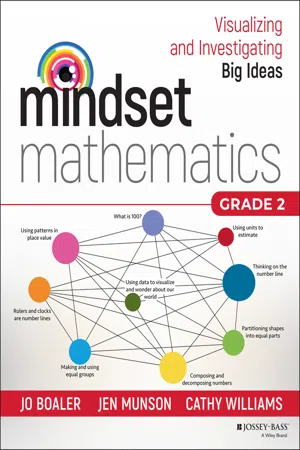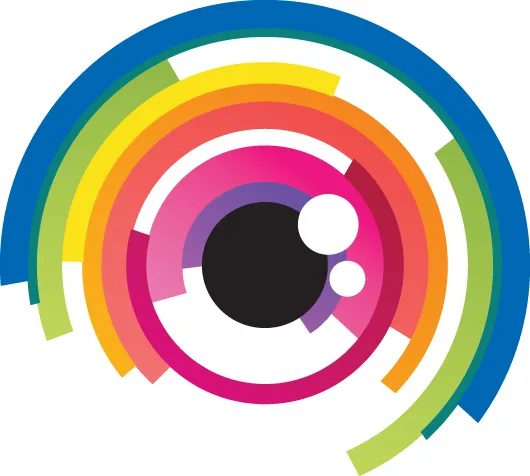
Mindset Mathematics: Visualizing and Investigating Big Ideas, Grade 2
- English
- ePUB (mobile friendly)
- Available on iOS & Android
Mindset Mathematics: Visualizing and Investigating Big Ideas, Grade 2
About this book
Engage students in mathematics using growth mindset techniques
The most challenging parts of teaching mathematics are engaging students and helping them understand the connections between mathematics concepts. In this volume, you'll find a collection of low-floor, high-ceiling tasks that will help you do just that, by looking at the big ideas in second grade through visualization, play, and investigation.
During their work with tens of thousands of teachers, authors Jo Boaler, Jen Munson, and Cathy Williams heard the same message?that they want to incorporate more brain science into their math instruction, but they need guidance in the techniques that work best to get across the concepts they needed to teach. So, the authors designed Mindset Mathematics around the principle of active student inquiry, with tasks that reflect the latest brain science on learning. Open, creative, and visual math tasks have been shown to support student learning, and more importantly change their relationship with mathematics and start believing in their own potential. The tasks in Mindset Mathematics reflect the lessons from brain science that:
- There is no such thing as a math person and anyone can learn mathematics to high levels.
- Mistakes, struggle, and challenge are opportunities for brain growth.
- Speed is unimportant, and even counterproductive, in mathematics.
- Mathematics is a visual and beautiful subject, and our brains want to think visually about mathematics.
With engaging questions, open-ended tasks, and four-color visuals that will help kids get excited about mathematics, Mindset Mathematics is organized around nine big ideas which emphasize the connections within the Common Core State Standards (CCSS) and can be used with any current curriculum.
Frequently asked questions
- Essential is ideal for learners and professionals who enjoy exploring a wide range of subjects. Access the Essential Library with 800,000+ trusted titles and best-sellers across business, personal growth, and the humanities. Includes unlimited reading time and Standard Read Aloud voice.
- Complete: Perfect for advanced learners and researchers needing full, unrestricted access. Unlock 1.4M+ books across hundreds of subjects, including academic and specialized titles. The Complete Plan also includes advanced features like Premium Read Aloud and Research Assistant.
Please note we cannot support devices running on iOS 13 and Android 7 or earlier. Learn more about using the app.
Information
BIG IDEA 1
Partitioning Shapes into Equal Parts
Reference

Equal or Same?
Snapshot
Agenda
| Activity | Time | Description/Prompt | Materials |
|---|---|---|---|
| Launch | 5–10 min | Show students the Partitioned Square image and ask, Are the parts equal? How do you know? Surface different ideas about what it means to be equal. | Partitioned Square sheet, to display |
| Explore | 20–25 min | Provide partners with the Partitioned Squares sheet. Partners explore t... |
Table of contents
- Cover
- Table of Contents
- Title Page
- Copyright
- Dedication
- Introduction
- Note on Materials
- Activities for Building Norms
- BIG IDEA 1: Partitioning Shapes into Equal Parts
- BIG IDEA 2: Making and Using Equal Groups
- BIG IDEA 3: What Is 100?
- BIG IDEA 4: Composing and Decomposing Numbers
- BIG IDEA 5: Using Patterns in Place Value
- BIG IDEA 6: Thinking on the Number Line
- BIG IDEA 7: Rulers and Clocks Are Number Lines
- BIG IDEA 8: Using Units to Estimate
- BIG IDEA 9: Using Data to Visualize and Wonder about Our World
- Appendix
- About the Authors
- Acknowledgments
- Index
- End User License Agreement